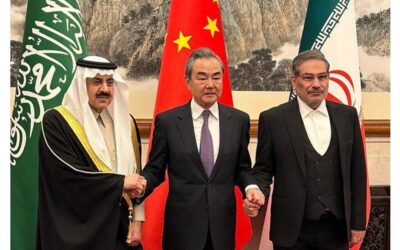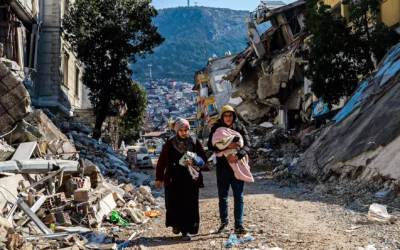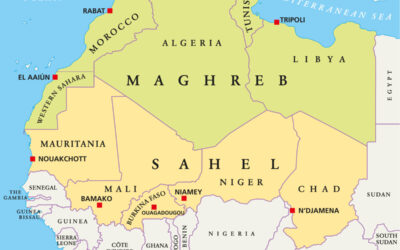On the night of March 19-20, the ship Golar Tundra docked at the port of Piombino, in the province of Livorno. The vessel is a regasifier, that is, an instrument through which Liquefied Natural Gas (LNG) is returned to a gaseous state and then fed into the grid. The infrastructure-which will become operational in mid-May-will be able to guarantee Italy quantities of gas equal to 5 billion cubic meters per year.
Energy diversification: before and after the invasion of Ukraine
The incident is an opportunity to reflect on Italian and European choices in terms of energy diversification. Indeed, the Russian invasion of Ukraine has forced the Old Continent to free itself from dependence on Russian gas and other types of energy sources. Data show that North Macedonia, Bosnia and Herzegovina, Moldova, Finland, and Latvia were 100 percent dependent on the Kremlin, Bulgaria 77 percent, and Germany and Italy between 45 and 50 percent. On average, until the outbreak of war, about 35 to 37 percent of European gas came from Moscow. This figure has dropped dramatically to a minimal share today. The gap caused by the vertical collapse of Russian gas supplies has been filled through increased imports made by Norway, via LNG (US, Qatar, and Nigeria) whose market shares at the end of 2022 are 24.93%, 25.72%, and 11.6% respectively, and by Algeria with Moscow standing firm at 12.9%
Gas&geopolitics: why not double the TAP
That the energy dimension is one of the drivers of Italy’s foreign policy and the European Union’s external action is a given, whether we are talking about energy derived from fossil sources or so-called renewable sources. However, this is an issue that goes beyond international relations – understood as diplomatic relations between states – and enters overwhelmingly into the field of geopolitics, as it concerns the relationship between the power of states and determined geographical spaces and times. One of the factors that determines this relationship, this relation, is the energy issue; especially, this is true for those states that need to meet their energy needs by turning to the outside world, since they cannot/will not do so by producing energy on their own soil.
The energy dimension thus also becomes a terrain of competition between geopolitical players, a fact exacerbated overbearingly by the outbreak of war in Ukraine. One of the countries to which many European states have turned is Azerbaijan, from where the Southern Gas Corridor starts. From there it transits to Georgia, Turkey and arrives in Italy, via the Trans Adriatic Pipeline (TAP). Last July 18, the European Union and Azerbaijan signed a Memorandum of Understanding (MoU) that envisions doubling current gas supplies by 2027 to a total capacity of 20 million cubic meters of gas per year. On January 30, however, the TAP consortium announced that the company will activate the first level of additional capacity expansion for 1.2 billion cubic meters per year.
Despite the grand proclamations following the signing of the new commitments, two issues emerge that risk becoming a geopolitical weapon in the hands of the actors with whom Europe and Italy are competing. The first has a technical dimension: of the 12 billion cubic meters that were supposed to arrive,-according to data from the Azerbaijani Ministry of Energy-only 11.4 have been delivered. No explanation has been given for this. At the same time, Moscow and Baku announced in November an agreement by which Gazprom supplied 1 billion cubic meters of gas to Azerbaijan’s state-owned company SOCAR until March 2023. Logical to think that Azerbaijan intends to use Russian gas for domestic use/export to third parties other than the European Union, so as to concentrate what it extracts at home to fulfill its new commitments to Brussels. Baku is not adhering to sanctions against Moscow-so it has no obligations to comply-but it is clear that the agreement with Gazprom makes European moves irrelevant, because it simply “shifts” gas flows, not reduces them.
Secondly – though of lesser importance – the doubling of TAP would make Turkey, Rome’s competitor in the race to become a new energy hub and in the geopolitical dynamics of the Mediterranean quadrant, an even more dangerous player, because it is equipped with a weapon of blackmail whose specific weight could double, and a source of more revenue for the government in Ankara (since much of the infrastructure transits on Turkish soil).
Green Stream e Transmed
Our country imports large amounts of gas mainly from North Africa, through the Green Stream and Transmed (from Libya and Algeria). These infrastructures have enormous strategic importance for Rome. In fact, since the birth of Eni, the model of relations adopted by Enrico Mattei has been based on cooperation and fostering the development of exporting countries. To this day, that approach has remained valid, so much so that in Libya, for example, the Milanese company meets about 80 percent of the North African country’s gas needs. It also provides the energy needed to sustain 2 million households through its assistance in power plant maintenance. Energy supply remains a priority for our country, but the modus operandi reflects the broad scope that energy policies have in this context, especially in an effort to contribute to the stabilization of Libya, the starting point of many migration routes to Italy.
The other major source of supply is Algeria-the country’s largest gas supplier-which meets about 40 percent of Italy’s needs. The Transmed pipeline originates in Hassi R’Mel, in the middle of the desert, transits for a piece in Tunisia and from there reaches Sicily, in Mazara del Vallo. The pipeline can be considered a symbol of the good historical relations between Algiers and Rome; in addition to the energy dimension, in fact, the commercial one should be considered. Italy turns out to be the first recipient country of Algerian exports, and the fourth when it comes to imports; in this sense, during Premier Meloni’s visit last January, Carlo Bonomi, President of Confindustria, was also present and signed a Memorandum of Understanding with the Algerian Economic Renewal Council.
In essence, with a view to reconciling strategic interests with energy needs, the southern shore of the Mediterranean is the choice on which Italy must focus decisively in terms of cooperation. In particular, this applies to Algeria, as the only country in the region that enjoys a good degree of internal stability, along with Morocco (although at the moment Rabat is at the center of judicial investigations concerning the corruption of members of the European Parliament). Finally, Algiers shares Rome’s interest in seeing the situation in the Sahel move toward stabilization, given the length of the border it shares with Mali and Niger, in an effort to curb migration flows and terrorist threats. Neighboring Tunisia is now a ticking time bomb ready to explode, the consequences of which would affect the entire Mediterranean quadrant. Having good relations with Tripoli and Algiers would allow damage control, pending decisive joint action at the European level.
Analysis by Andrea Meleri – taken from Istituto Analisi Relazioni Internazionali



